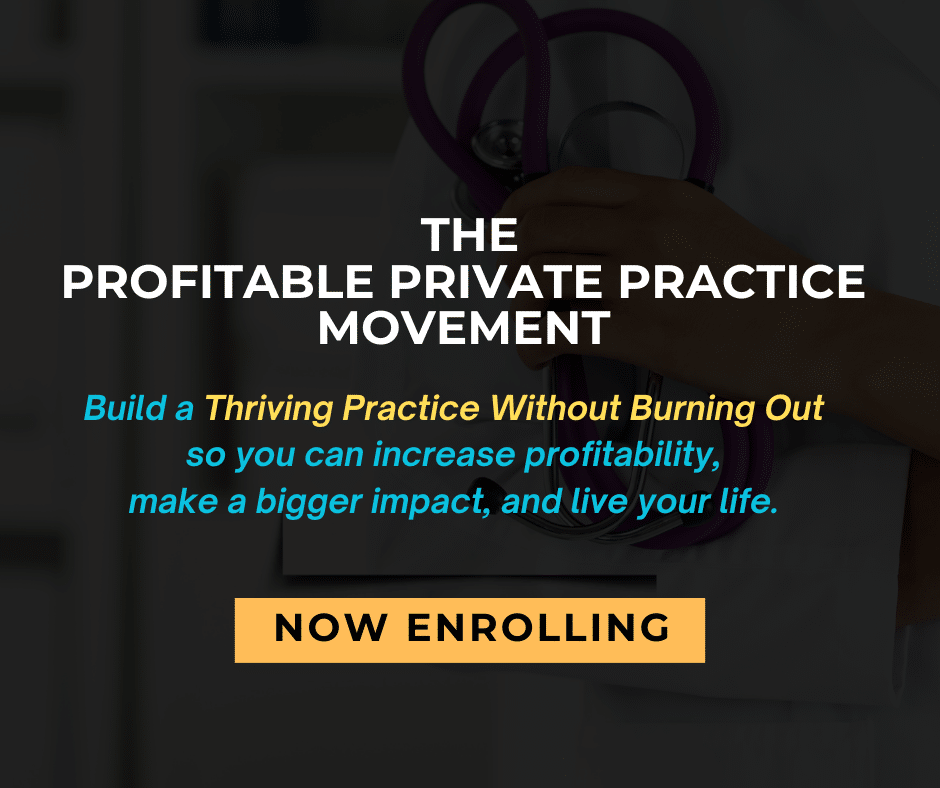There are loan programs explicitly designed with doctors in mind. Called a “physician loan” or “doctor mortgage loan,” these programs are intended for medical professionals and usually don’t require a down payment.
Regular mortgage loans require a down payment, and if borrowers can’t make a down payment above 20%, they’ll need to also pay for private mortgage insurance (PMI). This protects the lender if a homeowner can no longer service their mortgage loan.
Banks created doctor loan programs to help doctors get into the housing market. Because of their high debt-to-income ratios due to student loans, as well as earning only a modest salary during residency and, at best, minimal savings, doctors and physicians would find it almost impossible to qualify for a traditional mortgage.
The reality is that the average medical school debt is $202,450, and that’s before premedical undergraduate and other education debt. Other recent statistics show that:
- 73% of med school grads carry education debt
- 43% of “indebted” med school grads also have premed education debt
- The average medical school grad owes 7x more than the average non-medical school grad
- 70% of med school students use loans to help pay for med school (as opposed to any undergrad or premed debt)
- The average med school grad owes $250,990 in total student loan debt
Why Doctor Loan Programs Were Created
Banks, mortgage brokers, and other financial institutions saw an untapped market for future home buyers in new doctors. They have “little money, are financially naive, have vast sums of future earnings potential, and, best of all, almost all of them will soon purchase a mortgage,” according to The White Coat Investor.
Doctor loan programs were created to target residents or physicians in their first ten years of medical practice. These medical graduates are considered “low-risk and potentially lucrative customers.”
The job market and outlook for doctors are considered highly stable, and in today’s economy, doctors and physicians are rarely vulnerable to losing their jobs. This means the probability of paying their mortgages without interruption is exceptionally high.

Banks also see the bigger picture; they view offering doctor loan programs as strategic. While meeting a felt need on the part of doctors, the banks anticipate the potential of selling more of their financial services to these physicians, including investment planning, credit cards, and other loan offerings.
Between 2008 and 2017, the Bank of America experienced a nine-fold growth in the value of mortgages awarded to residents and doctors. That’s just one bank out of the hundreds in the United States. Other banks have hired extra staff to focus only on serving their doctor loan programs.
An Overview Of How Doctor Loan Programs Work
Traditional home loan programs can penalize medical professionals for having a high debt-to-income ratio due to their hefty student loans. Physician mortgage loans are specialized loans tailored to meet the needs of medical professionals.
These loans ignore high student loan debt and low or no savings, usually disqualifying traditional home loan programs. Doctors can put down less than 20% and still avoid private mortgage insurance.
Physician mortgage loans typically ignore the total owed on student loans and only consider the monthly payment. In addition, higher loan limits are available with physician mortgage loans than conventional ones, making it easier for doctors to purchase homes.
To qualify for a physician mortgage loan, borrowers must have a signed employment contract, pay stubs, and two years of tax returns. Borrowers need to decide on the appropriate loan amount before applying for a loan.
By being aware of their desired budget, borrowers can avoid taking out more than they can handle and are more likely to be approved. If you have more questions about the process, you should talk with a qualified loan officer who understands the specific requirements for doctor loan programs.

After deciding on an amount, prospective buyers should speak to several lenders to understand different program options, rate quotes, and fees. Homebuyers should always compare offers from different lenders to determine which will offer them the best terms and lowest cost.
Once the borrower has decided which lender to use, you’ll need to submit the necessary paperwork for them to receive final approval for the loan. The documents required may include the following:
- Bank statements
- Credit report information
- Proof of income
- W-2 forms
- Other documentation requested by the lender
This process can take several weeks, so it is important to plan accordingly and factor in time when beginning your search. Once the lender has received all documentation, you may receive your loan within 30 days.
The Pros Of A Doctor Loan
Doctor loan programs differ from regular mortgages in several significant ways:
- A significantly lower down payment is required
- No private mortgage insurance (PMI) is required
- High debt-to-income ratios don’t disqualify applicants
- Higher loan limits are available
Lower down payments. A down payment of zero to 10% is all that’s required for a physician mortgage. This makes a huge difference in opportunity compared to the minimum 20% required for a conventional mortgage.
Many doctor loan programs will issue a mortgage with zero down payment while allowing you to lock in a low insurance rate. Of course, the greater the down payment you can provide, the lower your monthly mortgage payments will be, and the less you’ll pay in interest over the life of the loan.
Private mortgage insurance (PMI). If you can’t come up with a 20% down payment, you must pay for private mortgage insurance. This will be a variable amount as it is based on insurance rates.
Most PMI costs 0.1-2% of your loan amount annually. Depending on the size of your mortgage, that could add up to several extra hundred dollars to your monthly mortgage payment.

High debt-to-income ratio (DTI). Conventional mortgages require your DTI to be 50% or lower. This figure is measured as a percentage of your monthly debt payment amount versus the amount of money you earn each month.
Few, if any, doctors can achieve less than 50% DTI due to their heavy student loan debt. Banks take this into account when they are considering a medical professional for one of their mortgages.
Higher loan limits. The most you can borrow for a “conforming” loan is $1,089,300 in “high-cost areas” and around $726,200 in other areas. Doctor mortgages don’t include the same cap on borrowing, and most financial institutions will allow you to borrow more if your salary can assure them you are a low-risk lendee.
The main benefit of doctor loan programs is that they allow new doctors and even residents to enter the housing market before they’ve paid off enough of their student loans to be attractive to banks offering conventional mortgages. This gives them years and even decades to build up equity and establish themselves financially.
The Cons Of A Doctor Loan
Physician mortgages have a few drawbacks to consider when deciding whether this type of mortgage is right for you. They typically have:
- Variable interest rates
- Higher interest rates
- Underwater mortgage
- Limits on types of primary residence
Variable interest rates. Doctors’ loans usually have variable interest rates, meaning the rate can go up or down at any time. This can make budgeting difficult if your payment changes every month.
Higher interest rates. Because of their variable rates, physician mortgages often have higher interest rates than traditional mortgages (0.125% to 0.25% higher). This can increase the total amount of money you pay over the life of the loan, as you’ll also have to consider fees and points.

Underwater mortgage. Physician mortgages also come with the risk of an underwater mortgage. If the value of your home decreases, you could end up owing more on the mortgage than your house is worth.
Limits on types of primary residence. Finally, physician mortgages generally only allow you to purchase certain types of primary residences, such as single-family homes or condominiums. This limits your ability to find a home that fits your needs and budget. It’s important to remember that not all lenders offer doctor loans, and some may not fit your specific financial situation. So it’s essential to shop around to get the best deal.
Doctor Loan Eligibility
Qualifications for doctor loan programs vary from lender to lender but typically require the borrower to meet certain professional requirements. For example, most lenders require the borrower to be a licensed doctor, dentist, or veterinarian in good standing with the respective state board.
Borrowers may be required to demonstrate they are employed full-time in clinical practice or work as an employee of a medical institution. The amount of time employed in the medical field can also be an essential factor in determining eligibility.

In addition to the professional requirements, conforming loan programs often require you to meet financial requirements such as providing proof of income and having a minimum credit score in the 720-740 FICO score range. However, some mortgage lenders will lend down to a 680 credit score under certain conditions if you have 6-12 months of cash reserves.
Borrowers must also show they have enough liquid assets to cover closing costs and down payments. The requirements vary from lender to lender and sometimes depend on the borrower’s current employment status.
It is important to check with each lender to determine the qualifications needed for their doctor loan program.
Refinancing A Doctor’s Loan
Although many banks allow you to apply for a doctor loan more than once, every bank has its unique program and rules. For example, some will no longer extend physician loans to a doctor once they are more than 10 years out from school or residency. It is possible to have more than one physician loan at a time as you move from house to house, but they are typically only offered on owner-occupied homes, not investment properties.
Most mortgages, including doctor loans, do not have an early repayment penalty, so refinancing may be a good option. It can make sense to refinance into a lower-rate conventional mortgage after a few years due to increasing income, decreasing debt-to-income ratio, increasing credit score, and increasing loan-to-value.

Doctor mortgages are generally only for purchasing a home, so it is best to ask the lenders directly if you wish to refinance a doctor loan with another doctor loan. In addition, you will want to compare fees and other details to ensure that refinancing makes financial sense for you in the long run.
Also, be aware that some banks may require additional documents when applying for a doctor loan, such as proof of medical school enrollment or your most recent pay stubs. Additionally, some banks require a higher down payment than average to qualify.
Should You Get As Big A Doctor Loan As Possible?
It’s understandable why many doctors and medical professionals are tempted to get as big of a loan as possible with a doctor loan program. After all, taking on a larger loan may mean more investment funds or paying off other debt.
But is it the best move?
Getting a loan with a large principal can be beneficial in some cases. For instance, if you’re looking to purchase a more expensive home than you can afford in a traditional mortgage, getting a doctor’s loan can help you bridge the gap. You can also use the extra funds to pay down other high-interest debt or make investments that will appreciate over time.
However, you should think carefully before taking on such a large loan. The larger the loan amount, the higher your monthly payments will be. You need income and job stability to support the payments for years. Taking on more debt also means more risk; you could be in a difficult financial situation if anything goes wrong.
It’s crucial to weigh all your options before deciding whether to get as big of a loan as possible with a doctor loan program. Make sure you calculate how much you can realistically afford to pay back each month and that you have enough of an emergency fund to cover any unexpected costs or dips in income.

Ultimately, the best move is the one that fits your financial needs and puts you in the best position for success. Before applying for a doctor loan program, take the time to review your budget, savings goals, and current debts. You can then decide which option makes the most sense for your specific situation.
It’s important to shop around and compare different lenders when applying for a doctor loan program. Different lenders offer different rates and terms, so make sure to read through all of the fine print carefully before signing anything.
Learning how to navigate the financial world as a physician isn’t always easy. And that’s why I started the EntreMD Business School. It’s designed to give you the business education you didn’t receive during your medical training.
I’m passionate about helping doctors build profitable businesses so they can live life and practice medicine on their own terms. Let me know how I can help you!


